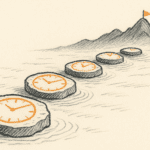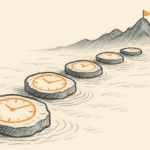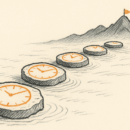Thinking like a customer could have saved Kodak
“In the mid-1990s I paid several visits to Kodak’s headquarters in Rochester, New York, and the cultural mindset was – with hindsight – on full display. Various executives told me how wonderful silver halide was.
Professional photographers could not do without it, nor could Hollywood. Digital was for amateurs. And even they would always want prints for the family album and home movies to send to distant relatives.
Kodak’s then chairman, George Fisher, was in an excellent position to know better. A technologist to his fingertips, he had recently moved from running Motorola. But faced with the stubborn Kodak reality, he took an awkward halfway position.”
TONY JACKSON, Financial Times (2 October 2011)
Another giant is on its knees. Which of us did not grow up with Kodak? The name was synonymous with photography for as long as most of us can remember.
Not anymore, though. Last weeks rumours swirled that Kodak was seeking advice that could lead to a bankruptcy application. The company’s share price plunged to less than a dollar. Note that it peaked at $94.25 in 1997. Few giants have tumbled this hard.
What happened? You know the answer. When was the last time you bought photographic film, inserted it into a camera, took snaps, removed the film, took it to a photo lab, and waited for the the film to be developed and prints made on special paper? Modern mass-market photography is just not like that, is it? These days we take snaps on our smartphones, upload the photos to “cloud” sites, and print only the exceptional results, if that.
So photographs are being taken differently, and displayed differently. For Kodak, which made most of its money from selling film and paper and lab materials, this is bad news. But here’s the thing: digital photography did not arrive overnight. It’s been growing in importance for a decade or two. So why did Kodak not see this change coming?
Tony Jackson provided some insights in the FT last week. He revealed that when he talked to top Kodak people in the 1990s (see excerpt), he encountered a team in denial; downplaying the likely impact of digital, and promoting the lasting relevance of traditional silver halide film.
And so Kodak was very, very slow to notice that digital cameras were getting better and cheaper; and slow to notice that paper prints and albums were being blown away by photo websites and digital display frames. It was no longer at the cutting edge of technology, and could no longer achieve quality or price leadership.
Kodak has been a slow puncture for quite a while now. Its sales have halved over the past decade, and it has not made a profit since 2007.
The lesson for the rest of us bears thinking about. It is not just that technology changes, stuff happens, etc. There was nothing inevitable about Kodak’s decline. Jackson points out that Fuji, the other traditional film photography giant of yesteryear, has not suffered anything like Kodak’s decline. Its sales have also fallen, but only by 8 per cent over the past decade. And Fuji still has positive cash flow.
Kodak, like most giants who come crashing down, undid itself. Its leaders trapped themselves in a cocoon of complacency, deluding themselves that their technology was still relevant when even a cursory examination of the customer value proposition should have revealed that it was not.
Who would not want a system where you can take as many shots as you like without worrying about the cost; delete all the bad and repetitive results; and then send the best snaps to friends and relatives anywhere in the world at the click of a button? That’s what the convergence of digital photography and mobile connectivity offered; the only question was when it would become cheap enough for mass conversion.
Well, when the tipping point came, Kodak was nowhere ready to lead the market. All because of entrenched management positions and protection of the dying status quo. Thinking like a customer could have saved the company.

Buy Sunny Bindra's new book
The X in CX
here »
Popular Posts
- Where are you rushing to—your funeral?June 29, 2025
- How to spot a real thinkerJune 15, 2025
- The map will appear—once you start walking.July 6, 2025
- Built the app, forgot the flowJune 22, 2025
- The pause that saves usJune 8, 2025















